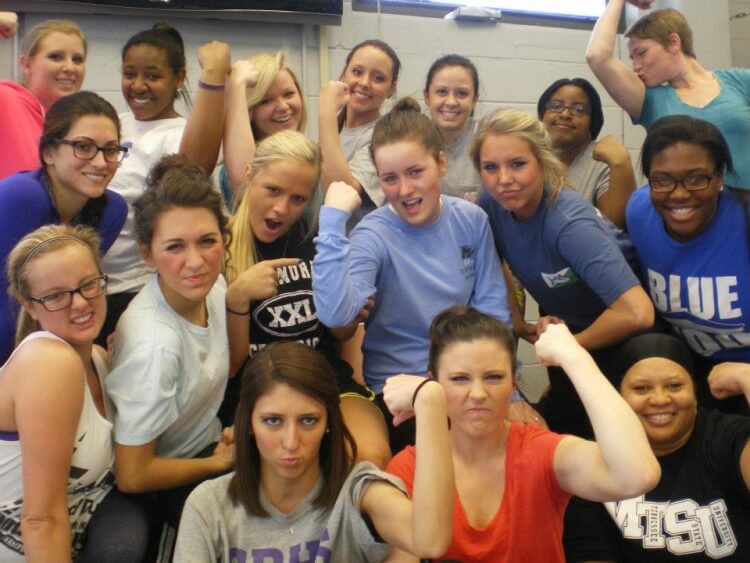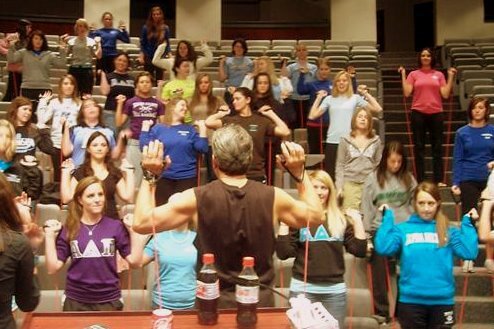I’ve read with admiration and excitement about SHAPE America’s 50 Million Strong by 2029 commitment. It’s a noble and worthy undertaking. If, or should I say “when” successful, the reduced healthcare costs will be transformational to our nation’s health and fiscal future.

As someone who works with college students and other emerging adults (18-29), I have a slightly different vantage point. Year after year I see students who were involved in physical education, athletics, dance, cheer, marching band etc., in their K-12 schooling, yet as they enter college become virtually inactive. It’s become clear to me that this transition period out of high school is a crucial crossroads in the lives of millions of young graduates each year. This is true not only with regard to physical activity and nutrition, but also on many other levels and dimensions of their lives.
In reality, students transitioning from high school to college still have much more maturing and development ahead of them. Although society sees this time point as the beginning of adulthood and self-responsibility, it’s vital that our high school graduates get the knowledge and support they need to make a successful transition to college and adulthood in a more well-reasoned, comprehensive and intentional manner. We need to approach this pivotal time in their lives with the care and emphasis it deserves, and focus on giving them a more effective and thorough preparation for the life challenges ahead of them.
New college students are first challenged by the higher level of effort that college academics demand. Relatedly, they must come to grips with a much greater need for improved time-management and general personal discipline. They also face major life decisions such as their identity formation, life goals, choice of occupation and career path, creating positive and lasting relationships, exploring friendships and love, and group membership.
Freshman college students must also learn to deal with saying goodbye to old friends and making new ones after leaving their home environment for the first time. Unsurprisingly, this is bewildering to many and paralyzing to some. Many retreat into doing just the basics to get by while others get lost in the party scene. It is no wonder that of those who drop out of college, 38% do so in their first year. The rate for sophomore dropouts isn’t much better at 29%.
As Robin and Samantha Henig point out in their book Twentysomething this is also the first time that these young adults will be making the health decisions that mom and dad always made for them. They will decide what to eat, when to go to bed, whether or not to get up early to exercise and how to socialize. Making time for all of these disciplined activities is difficult and making excuses is way too easy with very little accountability.
It’s for these reasons that the health and wellness of many college students’ starts going downhill during this stage of life. Studies have shown that the average college student begins to decline on 16 of the 20 leading health indicators during this developmental stage. This is the most common life segment for the start of the increasingly common downward slide into an unhealthy middle age.
Several decisive fitness-related events take place around the transition from high school to college especially for females. Many of them experience declines of 50% of their physical energy expenditure from Christmas of their high school senior year to Christmas of their college freshman year (Han, Dinger, Hull, Randall, Heesch & Fields, 2008). This combined with dietary and alcohol consumption changes (Butler, Black, Blue, & Gretebeck, 2004) can lead some students gaining as much as 20 pounds per year.
It’s the time in their lives when college students experience their greatest percentage increase in obesity (Ferrara, 2009). They are also most vulnerable to sexual violence as first year college students (Cranney, 2014). Finally, not initially getting engaged with positive groups on campus during their freshman year has been shown to predict the greatest threat to their retention/student success chances (Tinto, 2012).

What do I propose as an antidote to this less-than-optimal, even threatening situation? I believe a special holistic physical activity-based class should be instituted during their final high school semester that is specifically designed to equip these graduates-to-be for life after high school. I’ve discovered that this is often an opportune time to schedule such a class because many students have their graduation requirements completed by this time.
Worth considering is a collaborative, holistic wellness class similar to the one that colleagues and I have developed that is aimed at creating lifelong whole person well-being and intrinsically motivated fitness adherence. It could have a special focus on the values and preferences of young women.
If you have experience working with this age group, I invite you to share your thoughts and ideas and contribute to this focus on improving our student’s chances of continued healthy physical activity and nutrition habits after they make the leap to college and beyond. Share your ideas in the “comments” section below. In addition to all of the good work that is already going on, a key additional priority should be on making sure that our 50 Million Strong students successfully bridge the gap to college and STAY STRONG far into their adult lives!

1 Comment